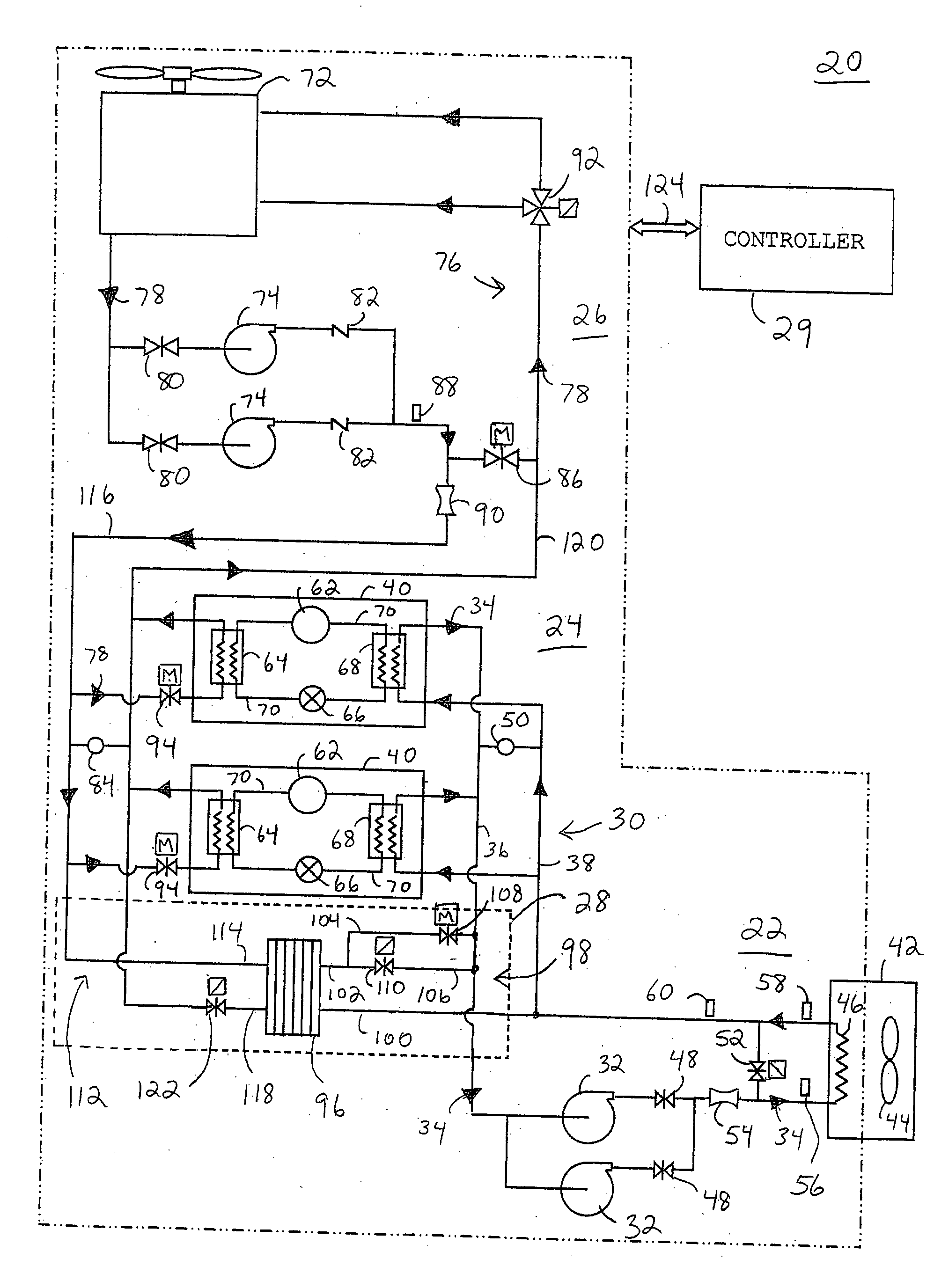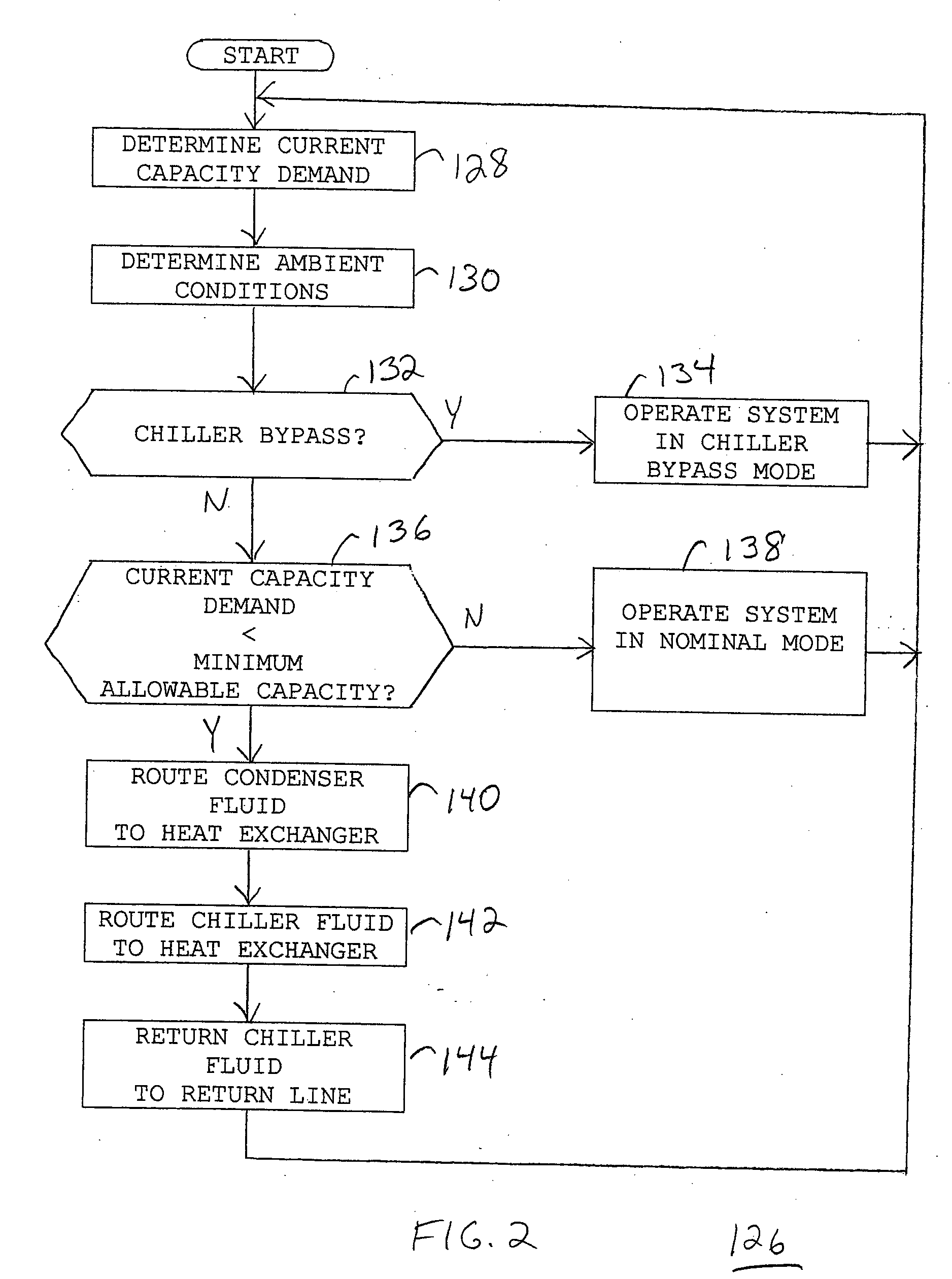Chiller system with low capacity controller and method of operating same
a controller and low-capacity technology, applied in the field of chilling water systems, can solve the problems of low capacity demand, lower kilowatt-per-ton use, and less efficient operation of chillers, and achieve the effect of low capacity, low capacity, and low cos
- Summary
- Abstract
- Description
- Claims
- Application Information
AI Technical Summary
Benefits of technology
Problems solved by technology
Method used
Image
Examples
Embodiment Construction
[0023]FIG. 1 shows a block diagram of a chiller system 20 in accordance with a preferred embodiment of the present invention. In general, chiller system 20 includes a chiller fluid section 22, a refrigeration section 24, a condenser fluid section 26, a low capacity controller 28, and a system controller 29.
[0024] Chiller fluid section 22 includes a chiller fluid loop 30 and pumps 32. Pumps 32 are in fluid communication with chiller fluid loop 30 for forcing a chiller fluid, represented by arrow heads 34, to circulate within chiller fluid loop 30. Chiller fluid loop 30 includes a supply line 36 and a return line 38. Supply line 36 conveys chiller fluid 34 from chillers 40 of refrigeration section 24 to an air handler 42 for conditioning the air within a space served by air handler 42. Air handler 42 uses chiller fluid 34 to transfer heat energy from the air being circulated from the space by means of a fan 44 and ductwork (not illustrated) to a heat exchange coil 46 of chiller fluid...
PUM
 Login to View More
Login to View More Abstract
Description
Claims
Application Information
 Login to View More
Login to View More - R&D
- Intellectual Property
- Life Sciences
- Materials
- Tech Scout
- Unparalleled Data Quality
- Higher Quality Content
- 60% Fewer Hallucinations
Browse by: Latest US Patents, China's latest patents, Technical Efficacy Thesaurus, Application Domain, Technology Topic, Popular Technical Reports.
© 2025 PatSnap. All rights reserved.Legal|Privacy policy|Modern Slavery Act Transparency Statement|Sitemap|About US| Contact US: help@patsnap.com



